Ministry of Heavy Industries
प्रविष्टि तिथि:
27 DEC 2018 12:21PM by PIB Delhi
Global Mobility Summit:
The Prime Minister of India, Narendra Modi,outlined the vision for the future of mobility in India, in the Global Mobility Summit held in New Delhi in September this year. He spelt out 7 Cs:Common, Connected, Convenient, Congestion-free, Charged, Clean and Cutting-edge.
· Public Transport must be the cornerstone of India’s mobility initiatives
· It must be integrated with geographies and different modes of transport
· Mobility should be safe, affordable and accessible to all sections of society
· It must be a check on the economic and environment costs of congestion
· Investments are being made across value chains from batteries to smart charging to Electric Vehicle manufacturing
· Mobility must be powered by clean energy which is India’s most powerful weapon in the fight against climate change
· It is a sector with immense opportunity for innovation and growth which can help solve problems for public good
FAME - INDIA SCHEME
The National Electric Mobility Mission Plan 2020 was unveiled in 2013as part of the scheme FAME-India [Faster Adoption and Manufacturing of (Hybrid &) Electric Vehicles in India]. The scheme is being implemented over a period of 6 years till 2020.It will support the hybrid and electric vehicles market development and its manufacturing eco-system to achieve self-sustenance at the end of this period. Government of India is committed to instil confidence in the industry and allow them to plan required investments and create needed capacities. This will also enable the scheme to align with Government’s Make in India initiative. The scheme focuses on four areas:
· Technology Development
· Demand Creation
· Pilot Projects
· Charging Infrastructure
The Phase-I of the schemecommenced from 1st April, 2015 and was extended till 31st March, 2018.
According to the National Automotive Board, under the Department of Heavy Industry Ministry, as of August 24, 2018 around Rs 264 crore worth of incentives were given out and a total of 226,557 vehicles benefited from the scheme.
The scheme is one of the green initiatives of the Government of India, which will be one of the biggest contributors in reducing pollution from road transport sector in the near future. This scheme is aimed at incentivizing all vehicle segments like 2-Wheelers, 3-Wheelers, 4-Wheeler Vehicles, Light Commercial Vehicles and Buses.
During 2017-18, following amendments were made in the FAME-India scheme:
· The Phase-I of the scheme was further extended for a period of 6 months i.e. upto 30.09.2017 and “Mild Hybrid” technology was excluded from benefits under FAME-India scheme
· Electric 3W (with maximum speed not exceeding 25 km/hr) has also been included for availing incentive under the scheme
· L5 category has been included in the retro fitment category
· Fully Electric Bus has also been included for demand incentive under the scheme
During the financial year 2017-18, an amount of Rs. 175 crore was allocated for this scheme, out of which an amount ofapprox.Rs. 85.49 crore has already been utilized. Through this scheme about 1,54,000 electric & hybrid vehicles have been given direct support by way of demand incentives (total incentive amounting to Rs. 202.72 crore) since its launch on 1st April,2015 and till 30th September, 2017. During financial year 2017-18, from 1st April, 2017, nearly 16,000 vehicles were supported by demand incentive till 30th September, 2017.
Further, during financial year 2017-18, the Department approved the pilot projects of charging infrastructure and project of technological development worth Rs. 17.50 crore. Some of the projects approved are:
· 200 (150-AC & 50 DC) Charging Stations at Delhi, Jaipur andChandigarh
· 75-AC Smart Chargers in NCR
· 60 DC-charging infrastructure
· pilot project for five electric buses at IGI Airport
· Design & Development of AC-DC Combined Public Charging Stations
Total No. of Vehicles Sold: 262776
|
38096145
Saved fuel ( In Litres)
|
|
52390
Fuel saving per day ( In Litres)
|
|
129870
CO2 Reduction per day ( In Kg.)
|
|
95142481
CO2 Reduction ( In Kg.)
|
AUTOMOTIVE POLICY
Department of Heavy Industry has finalized the draft Automotive Policy for holistic development of automobile sector in India. The policy proposes to:
· Adopt a long-term roadmap for emission standards beyond BS-VI and harmonize the same with global standards by 2028
· Rollout CAFE norms till 2025 and beyond and setup incentives and penalties
· Adopt a composite criterion based on length and CO2 emissions to classify vehicles for differential taxation purposes
· Harmonize automotive standards over the next 5 years in line with WP-29
· Improve the skill development and training eco-system, increase accountability of ASDC and implement a Labour Market Information System
· Retain tax exemption on different levels of R&D expenditure with strong audit control
· Scale-up of indigenous R&D with commercially viable innovations
· Harmonize AIS and BIS standards on safety of critical parts over next 3 years
· Fast track adoption of Bharat New Vehicle Safety Assessment Programme
The automotive industry is a pillar of Indian economy and a key driver of macro-economic growth and technological advancement:
· It contributes 7.1% to the total GDP and provides employment to about 32 million people, directly and indirectly
· Strong domestic demand along with supportive Government policies have led to the Indian automotive industry climbing up the ranks to be one of the global leaders
· India is the largest manufacturer of two-wheelers, three-wheelers and tractors in the world
· India is the fifth largest vehicle manufacturer overall
The automotive sector attracted USD 16.5 Billion in foreign direct investment between April 2000 and December 2016.
· The sector will attract around USD 8-10 billion more in local and foreign investment by 2023
· The growth of the automotive industry in India since the early 1990’s is a shining example of how industrial prowess supported by progressive policies and national economic growth can yield rewards to all stakeholders
· The advantage of experience, scale and expertise of Indian automotive companies along with the stimulus of high domestic demand provides the domestic industry with a unique opportunity to achieve global leadership in both manufacturing and engineering, especially in emerging areas
· The industry is being handheld by the Government to create a clean and sustainable mobility ecosystem
· Several global and domestic original equipment manufacturers (OEMs) and component manufacturers now operate in the country, offering consumers an ever-expanding range of vehicles with global standards of technology, features and quality.
The Government of India and the Indian automotive industry articulated their objectives for the future of the industry through the Automotive Mission Plan 2016-26 (AMP 2026). The plan envisions that by the year 2026, India will be the third in the world after China and USA in engineering, manufacturing and export of vehicles and auto components.
Government of India has demonstrated its intention to curb vehicular pollution through pivotal initiatives such as Faster Adoption and Manufacturing of (Hybrid &) Electric Vehicles (FAME) scheme, and regulatory measures such as early introduction of Bharat Stage- VI in 2020. Also, fuel consumption standards for Indian vehicles came into force in India in April 2017 for petrol, diesel, liquefied petroleum gas (LPG) and compressed natural gas (CNG) passenger vehicles. These standards are based on a Corporate Average Fuel Efficiency (CAFE) system and targets to bring about around 18% improvement in fuel consumption of passenger vehicles by 2022, compared to 2012.
CENTRAL PUBLIC SECTOR ENTERPRISES (CPSES)
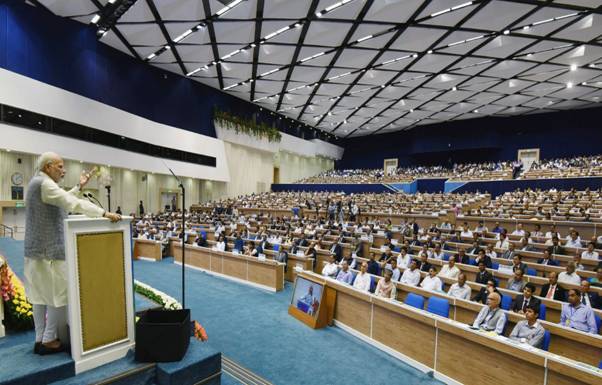
Prime Minister, Narendra Modi, addressing the CPSE Conclave, in New Delhi
Prime Minister of India, Narendra Modi addressed heads and senior officials of Central Public Sector Enterprises (CPSEs) at the CPSE Conclave-Vision 2022 in New Delhi in April this year. This was the first time in 75 years that a conclave of all CPSEs was held. The Prime Minister said that the conclave will be a new beginning to transform CPSEs into Profit and Social Benefit Generating Enterprises.
Prime Minister outlined three mantras for CPSEs- Incentives, Imagination and Institution building in order to bring about this transformation. He said that the CPSEs are the wealth of the nation and will be an important catalyst to fulfil the vision of New India by 2022.
· Unique incentives, not necessarily financial, will energize the public enterprises.
· Imagination will bring about technological changes for which leadership is necessary
· Institution building will transform the public enterprises from Maharatna into New India Ratna Enterprises.
The Prime Minister gave a formula of 5 Ps- Performance, Process, Persona, Procurement and Preparedness which will prepare the CPSEs to compete with the best companies in the world.Collective efforts of all CPSEs will help India become a 5 trillion-dollar economy in next five years and they will be the third arm of revenue generation for the India’s GDP.
Putting forth five challenges the Prime Minister asked for roadmaps with measurable targets to be prepared within 100 days towards fulfilling the vision of New India by 2022. The five challenges are:
- How CPSEs will increase their Geo Strategic Reach?
- How CPSEs will reduce India’s import bill?
- How CPSEs will work in coordination with each other for innovation and research?
- How CPSEs will use CSR funds for the 115 aspirational districts, which are to be brought on par with national indices?
- What new model CPSEs will offer to the development of New India?
CPSEs' under the Department of Heavy Industry:
1. Heavy Engineering Corporation Limited
2. Engineering Projects (India) Limited
3. Bharat Heavy Electricals Limited
Subsidiaries:
a) Bharat Heavy Plate and Vessels Limited
b) BHEL Electrical Machines Limited
Joint Venture:
a) NTPC BHEL Power Projects (Private) Limited
4. HMT Limited
Subsidiaries:
a) HMT (Bearing) Limited
b) HMT (International) Limited
c) HMT (Machine Tools) Limited
d) HMT(Watches) Limited
e) HMT (Chinar Watches) Limited
5. Scooters India Limited
6. Andrew Yule and Company Limited
Subsidiaries:
a) Hooghly Printing Company Limited
b) Yule Electricals Limited
c) Yule Engineering Limited
7. Cement Corporation of India Limited
8. Hindustan Cables Limited
9. Hindustan Paper Corporation Limited
Subsidiaries:
a) Nagaland Pulp and Paper Company Limited
b) Hindustan Newsprint Limited
c) Jagdishpur Paper Mills Limited
10. Hindustan Photo Films Manufacturing Company Limited
11. Hindustan Salts Limited
Subsidiary:
a) Sambhar Salts Limited
12. Instrumentation Limited
Subsidiary:
a) Rajasthan Electronics and Instruments Limited
13. NEPA Limited
14. Tyre Corporation of India Limited
15. Bharat Shari Udyog Nigam Limited; including
Subsidiary:
a) Braithwaite, Burn & lessop Construction Limited
16. Triveni Structurals Limited
17. Tungabhadra Steel Products Limited
18. Bharat Pumps and Compressors Limited
19. Richardson and Cruddas (1972) Limited
20. Bridge and Roof Company (India) Limited
CPSEs/Subsidiaries of CPSEs under liquidation/winding up/ closure/ transfer to other Departments/Organizations:
1. Bharat Ophthalmic Glass Limited
2. Bharat Leather Corporation Limited
3. Tannery and Footwear Corporation of India Limited
4. Rehabilitation Industries Corporation
5. Bharat Yantra Nigam Limited
6. National Bicycle Corporation of India Limited
7. National Industrial Development Corporation Limited
8. Mining and Allied Machinery Corporation Limited
9. Cycle Corporation of India Limited
10. Jessop and Company Limited
11. Lagan Jute Machinery Company Limited
12. Reyrolle Burn Limited
13. Weighbird (India) Limited
14. Bharat Brakes and Valves Limited
15. Bharat Process and Mechanical Engineers Limited
16. Mandaya National Paper Mills Limited
Autonomous Bodies:
1. Fluid Control Research Institute (FCRI)
2. The Automotive Research Association of India (ARAI)
3. NATRIP Implementation Society (for the Implementations of National Automotive
Testing and Research & Development Infrastructure Project)
4. Central Manufacturing Technology Institute (CMTI)
BHARAT HEAVY ELECTRICALS LIMITED (BHEL)
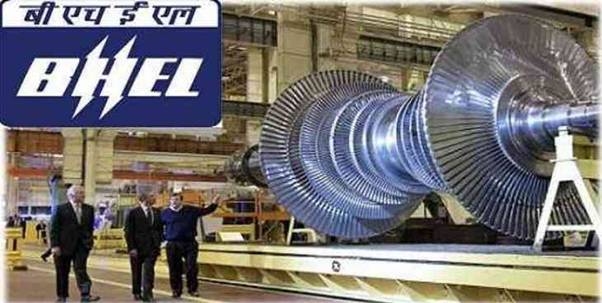
BHEL is a leader amongst Indian power plant equipment manufacturers
BHEL is the undisputed leader amongst the Indian power plant equipment manufacturers, a name to reckon with in the Indian industry and India’s industrial ambassador to the world. In its journey of over 55 years, it has gained the status of being one of the strongest pillars of Indian industry. BHEL serves the core sectors of the economy and provides a wide range of solutions to customers in power, transmission, transportation, renewables, water, defence & aerospace, oil & gas, and industry.
With 17 manufacturing plants, 2 repair units, 4 regional offices, 8 service centres, 1 subsidiary, 3 active joint ventures, 15 regional marketing centres, 3 overseas offices and current project execution at more than 150 project sites across India and abroad, BHEL manufactures a wide range of high quality & reliable products adhering to national and international standards for various industries. Till date, BHEL has installed around 11 GW power generating capacity in overseas markets, and an additional 6 GW is under execution.
The Union Cabinet approved the revised guidelines of the Department of Public Enterprises (DPE) on time bound closure of sick and loss making Central Public Sector Enterprises (CPSEs) and disposal of movable and immovable assets. The revised guidelines would reduce delays in implementation of closure plans of sick and loss making CPSEs.
· The guidelines provide a broad framework for expeditious completion of various processes and procedures for closure of CPSEs by laying down important milestones in the closure process along with timelines, outlining the responsibilities of the concerned Ministries, Departments and CPSEs in the process.
· The guidelines provide for advance preparatory action to be taken by administrative Ministry, Department and CPSEs, preparation of closure proposal, settlement of statutory and other liabilities of the CPSE under closure and modalities for disposal of movable and immovable assets of such CPSEs in a time bound manner.
The guidelines give first priority for utilization of land of CPSEs under closure for affordable housing as per guidelines of Ministry of Housing and Urban Affairs. The guidelines will apply to all sick and loss making CPSEs, where:
- Approval or in principle approval for closure has been obtained by administrative Ministry and Department from the CCEA or Cabinet; or
- the process for obtaining the approval of the competent authority is underway after the administrative Ministry and Department has decided for the closure of the CPSE.
Financial Package for Nepa Limited:
The Cabinet Committee on Economic Affairs announced a financial package of Rs. 469.41 crore for the Revival and Mill Development Plan (RMDP) of Nepa Limited, a public sector newsprint company located in Nepanagar, Madhya Pradesh. This package includes an infusion of Rs. 277 crores as equity in the company for the completion of RMDP which shall enhance production capacity to 1 lakh MT per annum from the present capacity of 83,000 MT per annum, diversify production, improve quality of products and also help resume production at Nepa Ltd. The RMDP is expected to be completed within a year.
A loan of Rs. 101.58 crore has also been approved for the payment of salary and wages. This will reduce the hardship being faced by the employees. A sum of Rs. 90.83 crore was approved for the voluntary retirement scheme of 400 employees. On completion of the RMDP,the strategic disinvestment of Nepa Ltd. at an appropriate time was also approved. The completion of the RMDP will help Nepa Ltd. to boost production and also support employment in the tribal belt of Madhya Pradesh.
INTERNATIONAL CENTRE FOR AUTOMOTIVE TECHNOLOGY
The International Centre for Automotive Technology (ICAT) completed the first BS-VI certification for a heavy duty engine model for M/s Volvo Eicher Commercial Vehicle Limited. The engine has been developed and manufactured indigenously by Volvo Eicher in India. The successful completion of the compliance test of the engine, much ahead of the implementation date of 1 April, 2020, gives sufficient time for product stabilization to make it more robust and cost competitive for the end consumers.
The pro-active approach from the Government of India has made the country leapfrog from the conventional BS-IV to directly adopt BS-VI emission norms as the next level for regulatory framework in India. The BS-VI emission standards integrate substantial changes to existing emission standards ensuring cleaner products to the consumer. Besides the more stringent limits on the gaseous emission components, the particulate matter (PM) limits have also been significantly reduced along with the introduction of particle number (PN) limits.
ICAT is the first of new world class centers established under the National Automotive Testing and R&D Infrastructure Project (NATRiP) with the main objective of carrying out Research & Development besides extending homologation facilities in the field of Automotive Engineering. It has emerged as a comprehensive technical partner of the automotive industry.
ICAT is one of the prime testing agencies recognized by the Government of India as one of the accredited 'Type Approval and Homologation' agencies under Central Motor Vehicle Rules (CMVR) and has also been recognized as Scientific and Industrial Research Organization (SIRO) by the Department of Scientific and Industrial Research (DSIR), since Feb 2010, by BIS for Tyre Testing and Safety Glasses and by Central Pollution Control Board (CPCB) for emission and noise testing of generator sets.
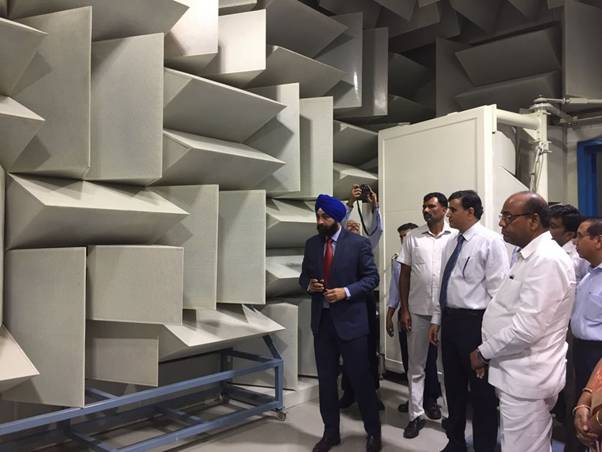
Heavy Industries Minister, Anant Geete at the International Centre for Automotive Technology (ICAT) at Manesar
National Automotive Testing and R&D Infrastructure Project (NATRIP) was inaugurated by Union Minister of Heavy Industries & Public Enterprise (HI &PE), Anant Geete at the International Centre for Automotive Technology (ICAT) at Manesar in Haryana. ICAT has been rendering services of automotive testing & certification to the industry since 2006.
NATRIP is the largest and most significant initiative in the automotive sector which represents collaboration between the Government of India, a number of State Governments and Indian Automotive Industry to create a state of the art testing, validation and R&D infrastructure in the country.
The augmented facilities have been completed at ICAT Centre-II at Manesar in Haryana.
The newly opened labs have the following facilities:
· Noise Vibration & Harshness (NVH) Lab
· Electromagnetic Compatibility (EMC) Lab
· Passive Safety Lab (PSL)
· Tyre Test Lab (TTL)
ICAT Certification to prevent use of forged certificates:
International Centre for Automotive Technology (ICAT) launched Certification with high security features in order to prevent use of forged certificates.
This is a first of its kind initiative taken by any automotive certification agency in India for enhancing the security of the CMVR certificates which includes Type Approval Certificates (TAC) and Conformity of Production (COP) Certificates for vehicles, engines and components.
The new ICAT certificate format consists of nine new and unique security features. The unique features in the certificate are:
· High security paper
· Printing using the ultraviolet ink
· Troymark
· Microprint
· Pantograph
· Reverse Pantograph
· Secure code
· Print code
· Digitally printed stamp and seal of ICAT
While some of the security features are generic in nature same for all the certificates), the other features are specific for each certificate i.e. the contents or the information covered through these features will be specific for that particular certificate. Another distinction is that some of the features are visible only through ultraviolet light. The certificates will be printed using special printers which have been imported by ICAT for this very purpose.
With the new high security features it will become difficult to forge or counterfeit the ICAT certificate.
ICAT is the premier certification agency authorized by Ministry of Road Transport and Highways (MORTH) for providing testing and certification services to the vehicle and component manufacturers situated within India and abroad. In addition to the certification services, ICAT is providing extensive testing services for product development and validation.
e-CHARGING STATIONS
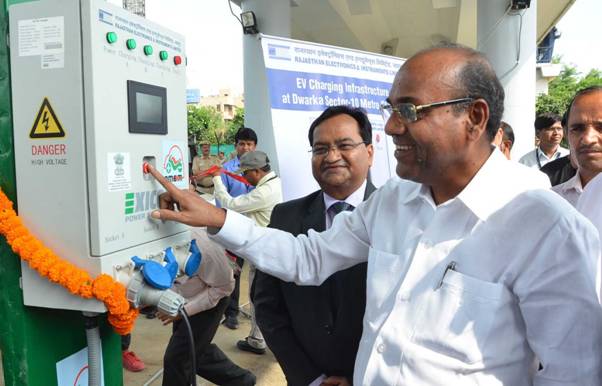
Anant Geete inaugurating e-charging infrastructure, in Dwarka, New Delhi
Union Minister of Heavy Industries & Public Enterprises,Anant Geete inaugurated charging stations in UdyogBhawan and Dwarka in New Delhi this year.
Eight charging stations have been installed in the premises of UdyogBhawan for facilitating charging of e-vehicles. Of the eight charging stations, two fast charging stations have been installed by BHEL and six slow charging stations by Energy Efficiency Services Limited (EESL).
In Dwarka, charging infrastructure has been developed by Rajasthan Electronics & Instruments Ltd. (REIL) having 18 charging stations. 400 e-rickshaws can be charged from these stations.
REIL has already set up 45 charging stations in different cities. Department of Heavy Industry funds charging station installed by REIL.
As a part of Swachh Bharat Mission and to continue with the Government of India’s sustained efforts to promote electric mobility in the country, the Department of Heavy Industry has allocated 455 electric buses to selected cities and special category states, through Expression of Interest (EoI) recently. The Department has also approved funding of 130 electric buses to Ahmedabad, Himachal Pradesh and Navi Mumbai.
For reduction in pollution levels and making cities cleaner and environment friendly, the Government is working on FAME-II scheme having focus on mass and shared public transportation based on electric powertrain. The necessity for development of charging infrastructure for smooth roll out of electric mobility in the country is being addressed in the Phase-II of FAME scheme.
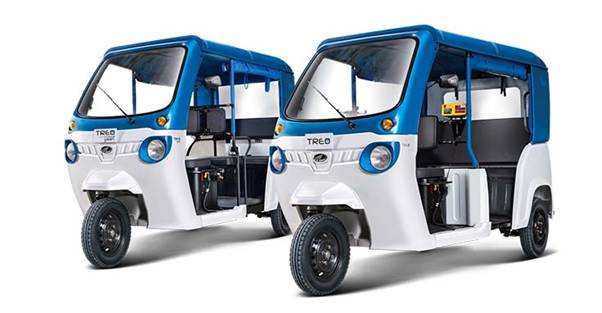
Lithium - Ion battery powered three wheeler
AUTOMOTIVE RESEARCH ASSOCIATION OF INDIA (ARAI)
ARAI, established in 1966, a leading Automotive R&D organization set-up by the automotive industry is affiliated to Ministry of Heavy Industries and Public Enterprises and is recognized by Department of Scientific and Industrial Research. ARAI is one of the premier Testing and Certification Agencies and plays a vital role in formulating regulations for the Indian automotive industry. An ISO 9001, 14001, 27001 and OHSAS 18001 certified organization, ARAI is accredited by National Accreditation Board for Testing & Calibration Laboratories (NABL).
ARAI is equipped with state-of-the-art facilities in the areas of emission evaluation, noise vibration and harshness, structural dynamics, engine design & development, computer aided engineering, vehicle evaluation, components safety evaluation, material evaluation, automotive electronics and calibration.
Significant Achievements of ARAI during 2018-19:
Awards & Recognitions:
· Recognized by National Traffic Safety and Environment Laboratory (NTSEL), Japan for TRIAS 31 Tests
· Director ARAI conferred with ‘EMobility+ Leadership Award 2018’
· Patent granted for ‘Improved Process and Device for Biodiesel Production for Home Appliance’ by the Patent Office, Government of India
· Outstanding Paper Award (two awards) at FISITA 2018
· Awarded certification for Information Security Management System (based as per ISO/IEC 27001-2013
|
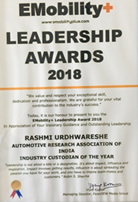
|
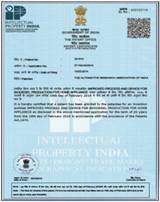
|
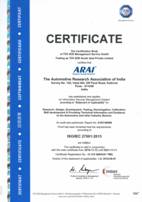
|
|
EMobility+ Leadership Award 2018
|
Patent granted by The Patent Office, Government of India
|
ISO/IEC 27001-2013 Certification
|
· Successful NABL Re-Assessment of Calibration Scopes and NABL Assessment of Mechanical, Electronics, Chemical & Photometry Testing Scopes of ARAI-Kothrud and ARAI-HTC.
· Successful Completion of Re-Certification Audits as per new versions of ISO9001-2015 / ISO14001-2015 and OHSAS 18001-2007 for ARAI-Kothrud & ARAI-FID and new Certification Audits as per ISO9001-2015 / ISO14001-2015 & OHSAS 18001-2007 of HTC-Chakan.
Significant Projects Executed:
· Low Floor (LF) and Semi-low Floor (SLF) Bus Prototypes with Aluminium Superstructure meeting AIS:052, bus body code requirements designed and built under DHI funded project.
· Smart structural system concepts for meeting the energy efficient targets under DHI funded project.
· Simulator for simulation of vehicle environment and conditions during offline testing and validation of BEVC DC-001 charging stations developed in-house.
· Design optimization of high capacity DG set enclosure to meet CPCB norms.
· Die Wear prediction through Forging Process Simulation.
· Fatigue Testing of Axles as per latest Notification.
· Electronic Stability Control (ESC) System Evaluation: M1 Category Vehicles using Steering Robot
· Ergonomics and Comfort Assessment of Off-Road Vehicle Operator Seat.
|
Aluminium Superstructured SLF Bus Proto
|
Aluminium Superstructured LF Bus Proto
|
|
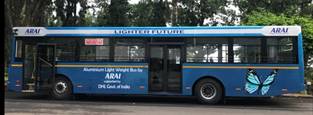
|
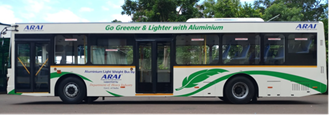
|
|
|
|
|
Development of Smart Structural Systems Concepts: Weight Optimization for Chassis Frame
|
Development of Smart Structural Systems Concepts: Steering Wheel Vibration Control by
Inertial Mass Actuator (IMA)
|
|
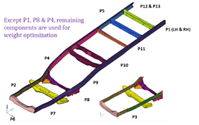
|
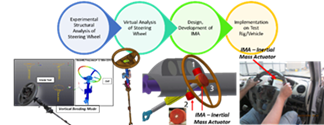
|
|
|
|
|
Simulator for Interoperability of BEVC DC-001 Chargers
|
Design optimization of high capacity DG Set Enclosure
|
|
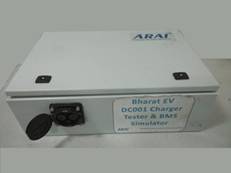
|
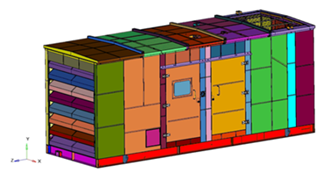
|
|
|
|
|
Die Wear Prediction
|
Fatigue Testing of Axles
|
|
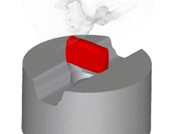
|
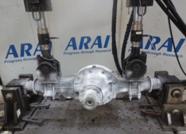
|
|
|
|
|
Electronic Stability Control (ESC) System Evaluation
|
Ergonomics and Comfort Assessment of Off-Road Vehicle Operator Seat
|
|
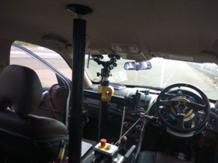
|
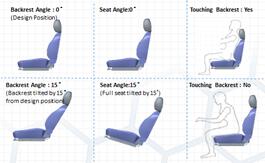
|
Significant Facilities Added:
|
E-Motor Test System for 2W EV
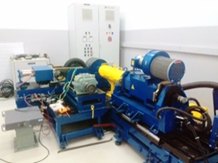
|
TGTC Lab at HTC
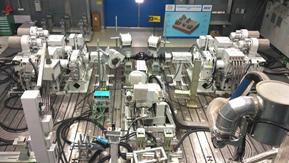
|
|
|
|
|
EV & EVSE Environment Simulator for Charger Testing
|
Chassis Dynamometer with
Mass Emission Measurement
|
|
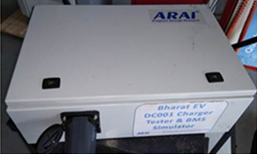
|
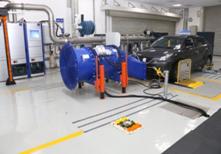
|
***
MM/ SB